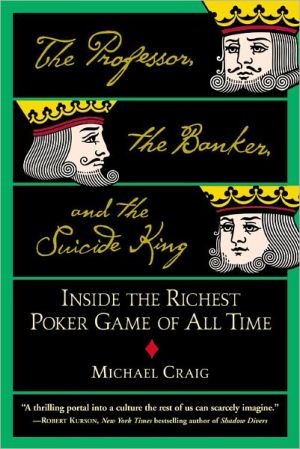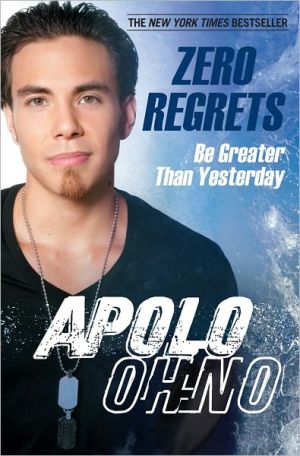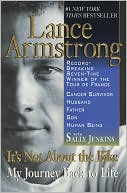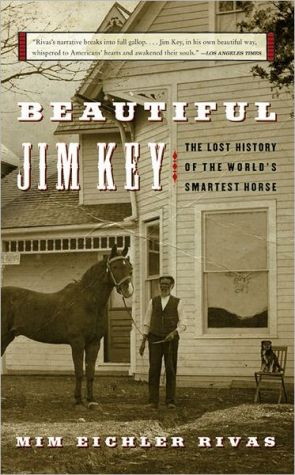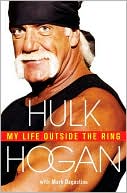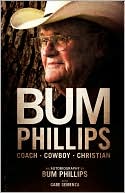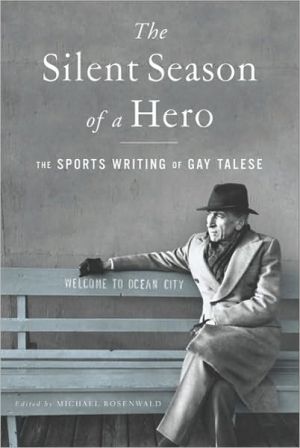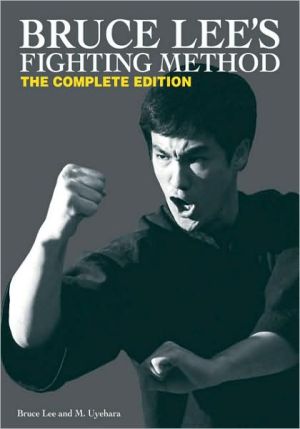The Professor, the Banker, and the Suicide King: Inside the Richest Poker Game of All Time
- One of the author's sources for this book is a member of the illustrious and mysterious "Corporation" of top-10 poker players who pool their money to play for millions—revealing for the first time the secrets of their games, strategies, and partnership. - Books about gambling sell extremely well, as evidenced by the success of Bringing Down the House (Free Press, 2002), which has 320,000 hardcover and trade paperback copies in print combined, and Positively Fifth Street (Farrar, Straus and...
Search in google:
In early 2001, a stranger from Texas started playing high-stakes poker at the Bellagio Hotel & Casino on the Las Vegas Strip. No ordinary novice, Andrew Beal owned one of the most profitable banks in Texas and relished challenges posed by hobbies such as advanced math theory and rocket science. Within months, Beal locked the world's top professional poker players in combat. He played them "heads up," the pros combining their bankrolls and taking on the newcomer one at a time. Minimum table stakes: $1 million. Beal offered the pros the richest poker game ever played and even as he demonstrated this formidable skills, they hungered to take him on. For three years, Beal ratcheted up the stakes, developed a world-class heads-up Texas hold 'em game, and devised unorthodox ways off cutting into the pros' advantage. On a few occasions, he left Las Vegas disgusted by his losses. On others, he threatened to win the combined playing bankroll of every high-stakes poker player in Las Vegas. Even though the pros saw their edge slip to almost nonexistent, they continued to engage Beal at ever-higher stakes. The players' livelihoods and Beal's ambitions collided in May 2004 in a game where the bets started at $100,000 per card and the winner could carry away more than $20 million. The Professor, The Banker, and The Suicide King opens the door to a world much imagined but never seen. With poker's surging popularity as a backdrop, its most able practitioners demonstrate the precariousness of their profession, where one wrong move, even at the pinnacle of their success, can pave the road to ruin. It is a world of outsized skills, egos, and ambitions. Robert Kurson, New York Times bestselling author of SHADOW DIVERS, said this book "plants the reader ringside for history's richest poker game, then won't let go until we know the hearts and minds of the world's greatest players, and the soul of the billionaire amateur who dared challenge them for everything they owned." Publishers Weekly The "professor" is Howard Lederer, a professional poker player whose rigorous analytical approach to the game earned him his nickname. The banker is Andy Beal, a multimillionaire obsessed with beating the world's best poker players at their game, limit Texas hold 'em, played for stratospheric stakes. The suicide king, a symbol of the aleatory nature of the endeavor, is the king of hearts, who holds his broadsword behind his head. It's a great mix, and Craig (The 5 Minute Investor) offers a knowledgeable and observant chronicle of the high-stakes games between Beal and the syndicate of professional players organized by the "Babe Ruth of poker," Doyle Brunson. The syndicate put up $10,000,000 to sit opposite Beal, trading $100,000 bets. Beal, for his part, took a mathematical approach, at one point running millions of computer simulations of various poker problems, in search of an edge against the pros, who rely on an uncanny intuition honed by thousands of hands. Craig includes enough details about the professionals to allow readers insight into their gambler personalities. Having interviewed many of the participants in this legendary poker battle, he describes it with an appropriate sense of awe, and readers will be awed as well. Agent, Eileen Cope. (June 2) Copyright 2005 Reed Business Information.
The Professor, the Banker, and the Suicide King\ \ By Michael Craig \ Warner Books\ Copyright © 2005 Michael Craig\ All right reserved.\ ISBN: 0-446-57769-3 \ \ \ \ Introduction\ An hour outside Las Vegas, Ted Forrest called the Bellagio poker room. This call was part of a ritual whenever Ted returned from California. If the action was big enough, he would drive straight to the casino and play. Otherwise, he would go home and call again that evening.\ Ted Forrest was a professional poker player, and he played for the highest stakes in the world. Even though he lived in Las Vegas, he chased the action around California, along the East Coast, and sometimes through Europe. The biggest games in Vegas were $1,500-$3,000, or maybe $2,000-$4,000, but those games popped up only occasionally. To keep himself in action, he commuted almost weekly to L.A. to the Bicycle Club, the Commerce Club, Hustler publisher Larry Flynt's house, or Flynt's Hustler Casino, for high-stakes poker.\ When a poker player is playing well, every game looks like a good game, and Forrest was playing very well. He had won over $2.3 million in the first ten weeks of 2001. Most people would say there is no way such results could continue. What distinguishes a professional like Ted Forrest, however, is his focus on making those results continue for as long as possible. He did not want to turn down any opportunities to play while things were going so well.\ His car, a Lincoln Mark VIII, was practically destined for this route. Tom McEvoy, the 1983 World Champion, won the car as the best all-around player at the Bicycle Club's Diamond Jim Brady Tournament in 1994. Phil Hellmuth, the 1989 World Champion, was backing McEvoy at the time and ended up with the car. Ted later staked Hellmuth, and bought the car from him. Ted Forrest possesses the perfect disposition for this lifestyle. On the outside, nothing about Ted gave the impression that he was one of the best poker players in the world. He was thirty-six, of average height and weight. His face was youthful, his features unlined. His brown hair was always neat, though he sometimes grew it a little long. He almost never raised his voice or got angry. He looked like a new teacher at a prep school. Even at the poker table, his blank expression and vague smile confused opponents and onlookers. He looked like he didn't have a care in the world, or like he was stoned.\ This exterior package hid that Ted Forrest was not someone to be trifled with, physically or mentally. He could do a standing back flip, run a marathon, or drink ten beers in thirty minutes. (He did all these things to win bets.) When he could find an opponent who was willing, he would play poker for over 100 hours at a stretch. He called these "death matches."\ Only Ted's eyes hinted at the fires burning within. They were narrow and gray and, though he did not try to stare down opponents, those beady pupils behind the slits made the rest of Ted's appearance look like a mask he was peering through.\ "High brush, please."\ Ted did not have the poker room on his speed dial, but he dialed it so frequently he could push the buttons on his cell phone without taking his eyes off the road. The Bellagio spreads games of many different sizes, and different employees have the responsibility over different parts of the room. In one corner, up two steps, is the high-limit area, and the floorperson (nicknamed the brush after the floorperson's unglamorous responsibility of cleaning up messes at the table) supervising these five tables is known as the high brush.\ "What's the biggest game in the room?" Ted expected to hear that an afternoon $400-$800 game was getting started, which would have been just big enough to draw him into the room.\ After a pause, the floorman said, "Ten-and-twenty-thousand Texas Hold 'Em."\ Ted must have heard wrong. The biggest game ever at the Bellagio had been $4,000-$8,000, and this was more than twice that size. A game that large doesn't just materialize on a Wednesday afternoon.\ "Are you sure that's right? Ten-and-twenty thousand?"\ "Yeah," the floorman answered, unemotional. "That's what they're playing."\ Ted struggled to clear his head as he drove toward the Bellagio. His palms had gone cold and clammy.\ Am I going to play? Am I going to play? I don't know if I'm going to play.\ But in Ted's heart, he knew the answer. He was a gambler, and this was the gamble of a lifetime. It didn't matter that Ted had no idea who was playing in the game. It didn't matter that the consensus among poker players was that Texas Hold 'Em was not Ted's strongest game. (None of the three World Series championships he won in 1993 had been in hold 'em, and he had largely given up playing in tournaments after that.) No one would challenge that he was one of the best Seven Card Stud and Seven Card Stud Hi/Lo players in the world, but the rap on Ted was that hold 'em was just not his game. He disagreed with this assessment, but never made it a point to argue. He was not confrontational, except at the poker table, and having opponents underestimate him was rare and welcome.\ This was more action than Ted had ever seen before, and he craved action. The creeping doubts were merely the functioning of a highly developed brain. The heart, however, was that of a gambler.\ He pulled the Lincoln into the South Garage, rode the elevator up to the casino, strode the short distance across the Starting Line bar, past the opening to the sports and race book, and into the poker room. Once in the room, he made a beeline for the cashier's cage.\ On weekends and evenings, the room's thirty tables were filled and aisle space was nearly nonexistent. Between the narrow passageways and the traffic of players, cocktail waitresses, chiprunners, dealers on shift change, floorpeople, and supervisors, walking from one end of the small room to another could take several minutes and violated all tenets of personal space.\ The high-stakes players usually didn't subject themselves to the stop-and-frisk of the room's main thoroughfares. The highlimit area was located in the back left corner of the poker room, up two steps. Three entrances serviced these five tables: one on the left, by the cashier's cage; one accessed through the middle of the poker room; and one on the right, accessed via a ramp from the sports book. The area upstairs was less crowded, received more attention from casino personnel, and offered easy access to an exit and the restrooms in the sports book and the cashier's cage.\ As Ted asked for his safe deposit box, he stole a glance at Table Seven, the upstairs table closest to the cashier's cage, where two men played Texas Hold 'Em in silence. David "Chip" Reese sat in Seat Four (meaning four seats to the left of the dealer, who sits in the middle of one of the long sides of the table). Chip Reese was considered by many to be the best all-around poker player in the world, taking on all comers in all forms of poker (along with gin rummy and backgammon) for over twenty-five years. Reese, chunky, still blond, still boyish at fifty, spent a summer in Las Vegas between Dartmouth and Harvard Law School. He never made it to Harvard. Forrest did not recognize the man sitting in Seat Two. He looked to be in his mid-forties, tall, heavyset, neat dark hair, a white dress shirt. A businessman.\ A businessman with a lot of money. The only chips on the table were white, with blue and red markings on the edges. The players called these flags, and they were $5,000 denomination chips. Forrest estimated that each man had a million dollars in chips.\ His brain was still not committed to play as he examined the contents of his box. There were some loose chips of different denominations, but the main contents lay in a clear plastic fivecolumn chip rack. One hundred flags: $500,000. Despite winning over $2 million at the poker tables in ten weeks, between money taken out for investments, taxes, living expenses, staking other players (bankrolling them for a share of the profits), money on deposit at California casinos, and irregular but occasionally substantial donations at the craps tables, this was the money Ted Forrest had to play poker.\ His heart was pounding, as if to drown out any remaining doubts. He had just enough money-his entire bankroll-to buy into the biggest poker game of his life and be at a significant disadvantage in chips.\ Five hundred thousand dollars sounded like a lot of money, but it wasn't. When it came out of the box, it was income. You could buy things with it, invest it, even give it away. Then, it was a lot of money. While it was in the box, however, it was working capital, and even mom-and-pop operators would tell you that a half-million dollars was not much working capital for a capitalintensive business.\ Poker is the most capital-intensive business in the world. Like banking or securities trading, the commodity is money. But while technology and innovations like margins and interbank lending have supplanted the need for physical cash in the financial world, monetary transactions in the poker world have a medieval flair. Although pros are forever loaning, borrowing, staking, and trading pieces (exchanging with another player a percentage share in each other's results), their ability to compete is closely related to what they have in the box.\ David Sklansky and Mason Malmuth, two expert poker players and writers with strong backgrounds in mathematics, have written on several occasions about capital requirements for professional poker players. To overcome the roller coaster of short-term fluctuations, an excellent player needs to have a bankroll equal to about 300 upper-limit bets in his regular game. A player of Ted Forrest's ability could have theoretically gotten by with less, but his regular game ranged between $400-$800 and $2,000-$4,000, with as much time as possible spent at the higher limits. In addition, many of his most frequent opponents were themselves among the best players in the world.\ If Ted lost this money, he would be broke. "Broke" means something entirely different in poker than anywhere else. Poker players are gamblers and they train themselves to make the proper plays, regardless of whether those plays actually work out. Every great poker player has run through their playing bankroll, most of them many times. Going broke is both a rite of passage and a badge of honor, a reminder that they live life on the edge. Most of the highest-stakes players, through their years of success, have deliberately kept themselves undercapitalized, because they have been aggressive about trying to shelter as much money from poker as possible, buying property, starting businesses, and investing in the stock market. Of course, they obtained and maintained those assets by keeping their bankroll intact.\ More often, a poker player on "broke street" simply borrows from other players and repays them when his bankroll has been rebuilt. But this is stressful and can lead to self-doubts and further losses. In this instance, Ted Forrest was one of the world's best poker players, on one of the biggest heaters of his life. How could his finances ever be secure if he went broke now?\ Immediately to the right of the cage was an unmarked door. Inside, monitored by cameras every moment of every day, players accessed their safe deposit boxes. The cashier would move along the continuation of the counter to the other side of that door and receive the player's key. The player would sign a card acknowledging receipt of the box, and check its contents. Ted removed the rack from the box, handed the box back to the cashier, signed the card acknowledging return of the box, and waited a moment to receive his key back.\ Ted exited the room and walked up the two steps to Table Seven. He saw a game going on at Table One, the corner table usually spreading the highest stakes, but he averted his eyes. He did not want to give himself a chance to choose another game.\ Ted took a better look at Table Seven. Regulation 23 of the Nevada Gaming Commission and State Gaming Control Board required that the rules of each game be posted at the table. This meant the Bellagio always had a plastic card to the dealer's left stating the game, the stakes, the blinds or antes, and the rake (the portion taken by the casino for spreading the game). There had never been a poker game this big, so the Bellagio did not have a placard with that information. Someone taped a piece of paper over another placard, writing "$10,000-$20,000 Texas Hold 'Em," "minimum buy-in $100,000," and blinds of "$5,000-$10,000."\ Ted sat down in Seat Six, to Chip Reese's left and across from the dealer. The best seat was the empty seat between the stranger and Chip, Seat Three. Position is important in Texas Hold 'Em and Seat Three would put Ted to the left of the stranger, acting after him throughout the hand, two-thirds of the time. Forrest and Reese would be trying to win money from each other, but they had played each other for years and knew each other's expert skills. Both expected their profit to come from the businessman. Reese, however, obviously left Seat Three open to give him and the stranger a little space, not as an invitation for someone to take over that prime position (as if anyone other than Ted Forrest would just wander into a $10,000-$20,000 poker game).\ Ted decided not to start the game with a confrontation. Anybody with the minimum buy-in could sit in any open seat in the Bellagio poker room. Reese would have objected, however, and it wasn't worth starting the game with a fight. It was enough that Ted felt the butterflies in his stomach he hadn't felt since his $15-$30 stud days, when he was putting most of his bankroll on the line whenever he played.\ Against an unfamiliar opponent, Ted Forrest tried to keep an open mind. He respected their bets until he learned how they played. This was not a matter of courtesy. For Ted, it was good strategy. Too many pros assumed an unfamiliar player didn't know how to play, refusing to give him credit for having a big hand when he led the betting. In the end, the pro would learn the new player's style and adjust, but underestimating a new player's ability was the more expensive error. If he overestimated a player's skill, he would get that money back when the player continued believing he could bluff Ted Forrest off his hand. Not giving the new player proper respect, however, could cost a lot of bets in the short term.\ In $10,000-$20,000 Texas Hold 'Em, the blinds are $5,000 and $10,000. With three players, it was costing Ted a minimum of $15,000 every three hands just to sit at the table. It was an excruciatingly expensive way to get a read on the new player, a Texas banker named Andy Beal. Beal was very aggressive, playing nearly every hand, raising most of the time. It was costing Ted $20,000 per hand to see the flop, and his bankroll was taking a beating. After twenty minutes, Ted was down to his last $100,000, and he hadn't even gotten involved in many pots.\ Oh, my God, he thought, what am I doing? Why did I sit down?\ (Continues...)\ \ \ \ \ Excerpted from The Professor, the Banker, and the Suicide King by Michael Craig Copyright © 2005 by Michael Craig. Excerpted by permission.\ All rights reserved. No part of this excerpt may be reproduced or reprinted without permission in writing from the publisher.\ Excerpts are provided by Dial-A-Book Inc. solely for the personal use of visitors to this web site. \ \
\ From Barnes & NobleSelf-made Texas billionaire Andrew Beal plays poker with nearly suicidal abandon. As one world champion player noted, "It's almost as if he's playing with disdain for the value of money." Soon after he arrived at the Bellagio Hotel and Casino on the Las Vegas Strip in early 2001, he locked the world's top professional poker players in high-stakes, "heads up" battle. The pros combined their bankrolls and took on the newcomer one at a time; the minimum table stakes were a crisp $1 million. For three years, the Lone Star banker matched wits and hands with the world's best. Poker ace Michael Craig tells the story of this epic contest, which culminated in a May 2004 game where the bets started at $100,000 per card and where the ultimate pot could top $20 million.\ \ \ \ \ Publishers WeeklyThe "professor" is Howard Lederer, a professional poker player whose rigorous analytical approach to the game earned him his nickname. The banker is Andy Beal, a multimillionaire obsessed with beating the world's best poker players at their game, limit Texas hold 'em, played for stratospheric stakes. The suicide king, a symbol of the aleatory nature of the endeavor, is the king of hearts, who holds his broadsword behind his head. It's a great mix, and Craig (The 5 Minute Investor) offers a knowledgeable and observant chronicle of the high-stakes games between Beal and the syndicate of professional players organized by the "Babe Ruth of poker," Doyle Brunson. The syndicate put up $10,000,000 to sit opposite Beal, trading $100,000 bets. Beal, for his part, took a mathematical approach, at one point running millions of computer simulations of various poker problems, in search of an edge against the pros, who rely on an uncanny intuition honed by thousands of hands. Craig includes enough details about the professionals to allow readers insight into their gambler personalities. Having interviewed many of the participants in this legendary poker battle, he describes it with an appropriate sense of awe, and readers will be awed as well. Agent, Eileen Cope. (June 2) Copyright 2005 Reed Business Information.\ \
